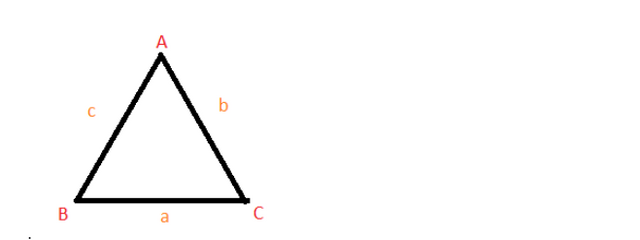What is the reflexive property of congruence?
The triangle inequality theorem states that for any given triangle, the sum of any two sides is always greater than the third side. It describes the relationship between the sides of the triangle and is applicable for any type of triangle be it equilateral, isosceles or scalene.
Consider a ∆ABC as shown where a, b, and c are the length of the sides.

According to the theorem ABC is a triangle only if,
a+b>c,
b+c>a,
c+a>b.
How can we use the triangle inequality theorem?
It is a very simple theorem to use. Whenever 3 lengths are given, we need to just verify if the sum of any 2 is always greater than the third side.
Suppose, we need to check 11,13 and 15 can form a triangle
11+13 >15
13+15>11
15+11>13
So, there exists a scalene triangle with the sides 11,13 and 15 units.
If side lengths are given to be 4, 4, and 8 units, these form 3 collinear points since,
4+4 = 8 (the triangle inequality theorem fails for one set as the sum should be greater than third)
So it's not possible to have a triangle with these dimensions. However, 5,5 and 8 are possible.
Note that in a right triangle with sides 3, 4, and 5 or any equilateral triangle too, this constraint will be met.


